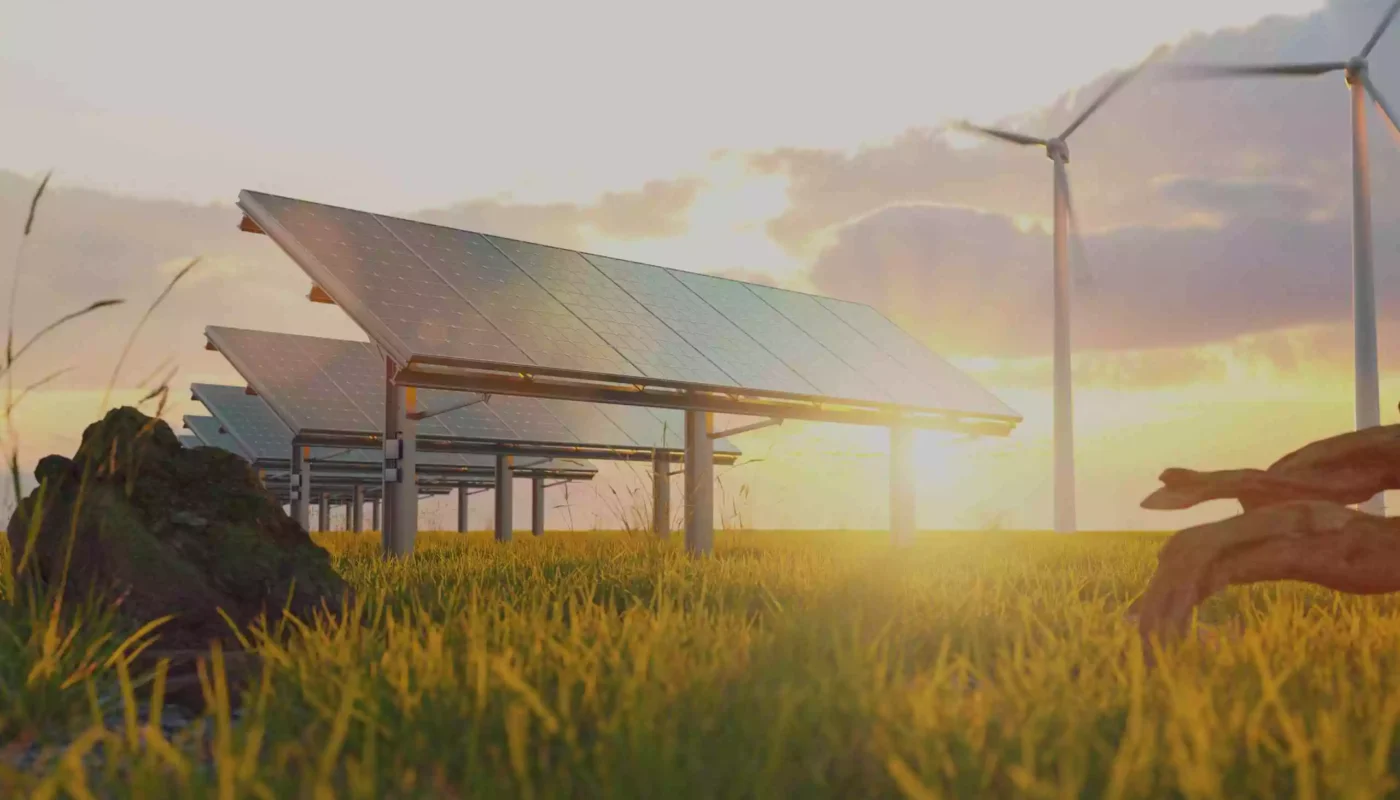Advancements in renewable energy technologies have significantly increased efficiency and lowered costs. Solar, wind, and battery storage innovations are leading the way.
Renewable energy technologies have made remarkable progress in recent years. Solar power systems now offer higher efficiency at lower costs, making them more accessible. Wind energy has seen similar advancements, with turbines becoming more powerful and efficient. Battery storage technology has also evolved, allowing for better energy storage and management.
These innovations are crucial for reducing reliance on fossil fuels and combating climate change. Governments and private sectors are investing heavily in these technologies, driving further advancements. With continued research and development, renewable energy is poised to become the dominant source of power worldwide. This shift promises a cleaner, more sustainable future for generations to come.
The Rise Of Green Energy
People used to rely on coal and oil. These sources caused pollution. Renewable energy became popular in the 1970s. Solar power and wind power were new ideas then. Today, they are common and important. Governments support renewable energy more now. This helps the planet and saves money.
Many countries use more renewable energy today. Solar panels and wind turbines are everywhere. Clean energy is cheaper than before. China and India lead in solar power use. Europe uses a lot of wind power. Africa and South America are also growing in renewables.
Solar Power Innovations
New photovoltaic cells can convert more sunlight into electricity. These cells are more efficient and cost-effective. They use advanced materials to capture more light. This means more energy from the same amount of sunlight.
Some cells are even flexible. They can be used in many places, like on roofs and windows. This makes solar power more accessible to everyone.
Storing solar energy is important for using power at night. Batteries are getting better at storing solar energy. They can hold more power and last longer. This helps keep the lights on even when the sun is not shining.
New technologies like liquid metal batteries are also emerging. They are cheaper and more efficient. This makes solar energy storage more affordable for homes and businesses.
Wind Energy Breakthroughs
New turbine designs are smaller and more efficient. They produce more energy with less wind. Materials used are lighter and stronger. This helps the turbines to last longer. Blades are now quieter, which helps reduce noise pollution. Smart sensors are added to monitor performance. These sensors can predict and prevent failures. Installation is easier and quicker with new designs.
Offshore wind farms are growing fast. They are built far out at sea. Stronger winds at sea produce more energy. Floating turbines are a new trend. They can be placed in deep waters. Cables used are more durable and efficient. Maintenance is easier with new technology. Robots can fix issues without human help. This makes offshore wind farms more reliable.
Hydropower: The Silent Giant
Turbine efficiency has improved a lot. New materials make turbines stronger and last longer. Better designs help turbines capture more energy. Turbines can now work in low-flow rivers. This means more places can use hydropower.
Smart technology helps turbines run better. They can adjust to changes in water flow. This makes them more reliable and efficient. Such advancements make hydropower a key player in renewable energy.
Mini and micro hydropower systems are small but powerful. They can power remote areas. These systems are easy to set up. They do not need big dams. Small streams can power them.
These systems are great for communities without access to the grid. They can provide clean energy. This helps reduce the use of fossil fuels. Small systems can make a big difference.
Bioenergy And Waste-to-energy
Biofuels are made from plants and waste. These fuels are better for the Earth. New biofuel types are being developed. They are more efficient and cleaner. Algae is a new source for biofuel. It grows fast and can be turned into fuel. Scientists are also working on using waste as a fuel source. This reduces trash and makes energy. Biofuels can power cars, planes, and homes. This helps reduce the use of fossil fuels.
Anaerobic digestion turns waste into energy. This process happens without oxygen. It produces biogas. This gas can be used for electricity and heat. New methods make this process faster and more efficient. Better digesters break down waste more completely. This means more energy is made. Farmers can use this method to manage animal waste. Cities can use it to handle food waste. It helps reduce landfill use. Anaerobic digestion is a smart way to make clean energy.
Geothermal: Earth’s Untapped Potential
Enhanced Geothermal Systems (EGS) use heat from deep inside the Earth. This heat is used to make electricity. Water is pumped deep into the ground. The water gets hot and turns into steam. The steam is then used to power turbines. This process is clean and does not pollute the air. EGS can work in many places around the world.
Geothermal energy can also be used for direct heating. This means using hot water from the ground to heat buildings. It can also heat swimming pools and greenhouses. This method is very efficient. District heating systems use geothermal energy to heat many buildings at once. Hot water is sent through pipes to homes and offices. This helps save energy and money.
Energy Efficiency As A Pillar Of Renewables
Smart grids help manage energy use better. They use real-time data to balance energy supply and demand. This reduces energy waste. Demand response programs are also part of smart grids. They reward users for saving energy during peak times. This helps lower energy bills and supports the grid.
New buildings use energy-saving technologies to reduce power use. Solar panels on roofs generate power from the sun. Insulated windows keep homes warm in winter and cool in summer. LED lights save more energy than traditional bulbs. These technologies make homes and buildings more efficient.
Economic And Policy Drivers
Governments around the world offer incentives for renewable energy. These incentives help reduce the cost of installing solar panels and wind turbines. Subsidies also make renewable energy more affordable for consumers. This support encourages more people to use clean energy sources. By lowering costs, governments help fight climate change.
Private companies play a big role in renewable energy growth. They invest in new technologies and infrastructure. This investment helps develop better solar panels and wind turbines. Private funds also speed up the building of renewable energy projects. More investment means faster progress in clean energy. Both governments and private companies are key to renewable energy success.
Challenges And Solutions
Solar and wind energy are not always available. This is called intermittency. Energy storage systems can help solve this. Batteries store extra energy for later use. Hydropower can also store energy. Water is pumped to a higher place and released when needed. Smart grids help manage energy supply and demand.
Updating old power grids is important. New grids can handle renewable energy better. Microgrids are small, local grids. They work with the main grid but can also work alone. Smart meters show real-time energy use. This helps balance supply and demand. Government policies can help build better infrastructure.
The Future Of Renewable Energy
Renewable energy is changing fast. Solar panels are now more efficient. Wind turbines are getting bigger and better. New battery technology can store more energy. This means we can use clean energy even at night. Ocean energy is also being explored. Waves and tides can generate electricity. These advancements make renewable energy more reliable.
Countries are working together to fight climate change. They share technology and ideas. This helps everyone improve faster. Rich countries help poorer ones with funds. This way, all can benefit from clean energy. Scientists from different nations work on joint projects. They solve problems faster together. International laws support renewable energy projects. This global effort makes a big difference.
Renewable energy technologies are transforming our future. With continuous innovations, these advancements promise a sustainable and greener planet. Embracing these technologies is essential for environmental preservation. Stay informed and support renewable energy initiatives for a brighter tomorrow. Let’s work together towards a cleaner, more sustainable world.




